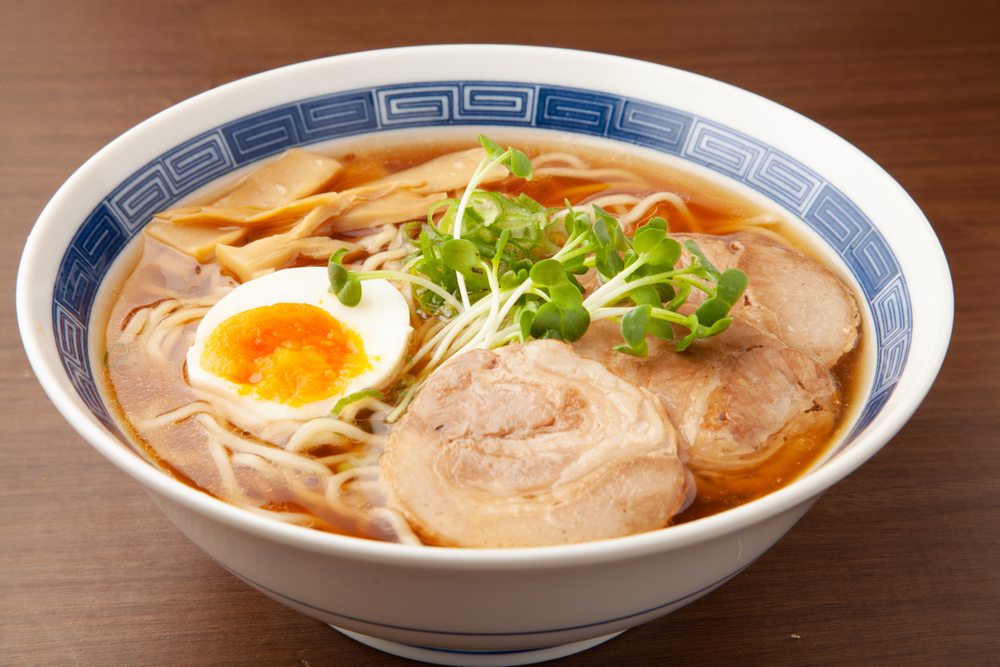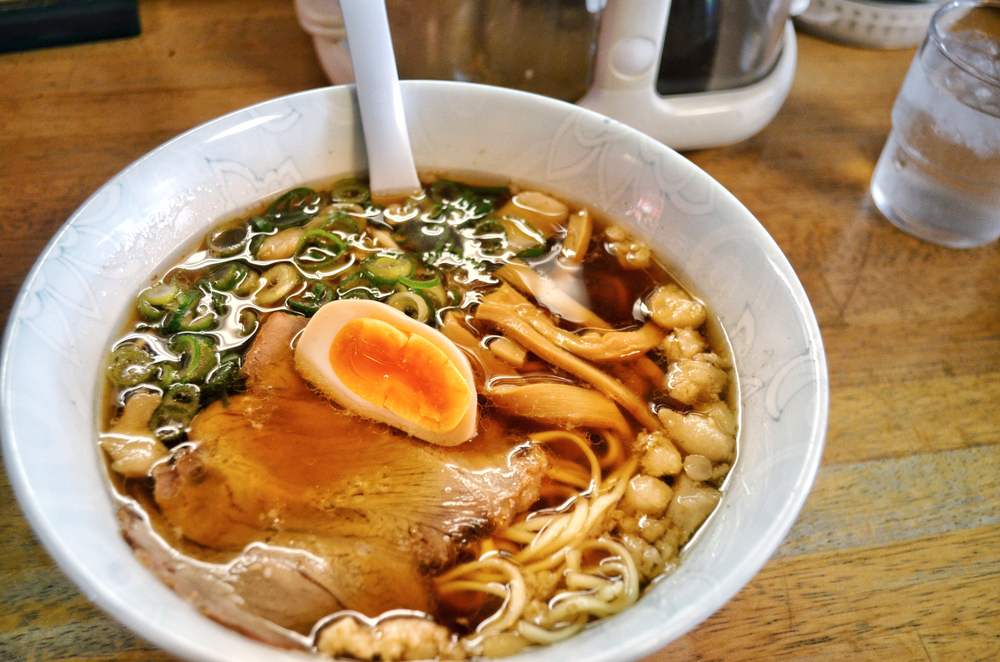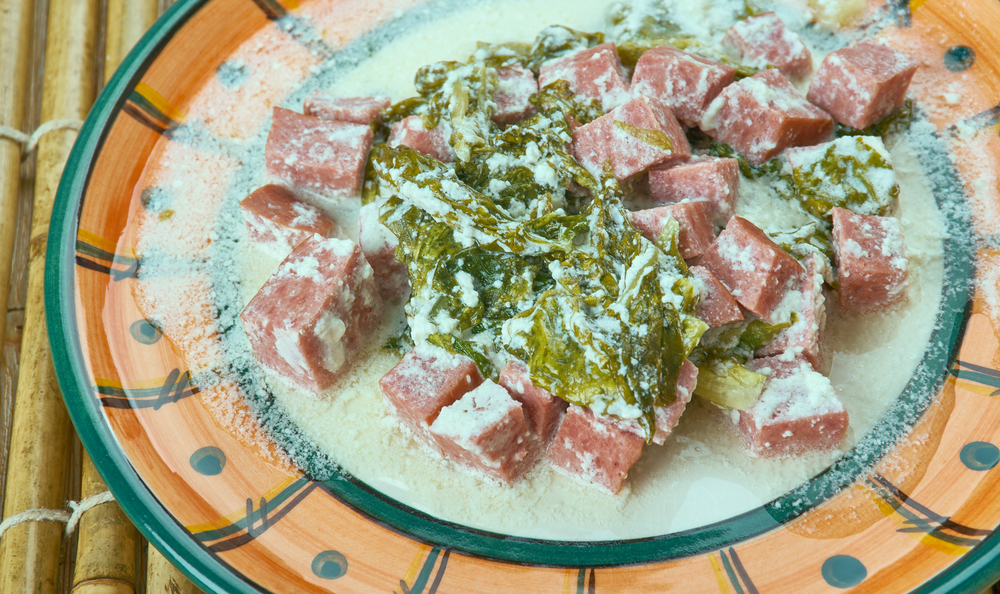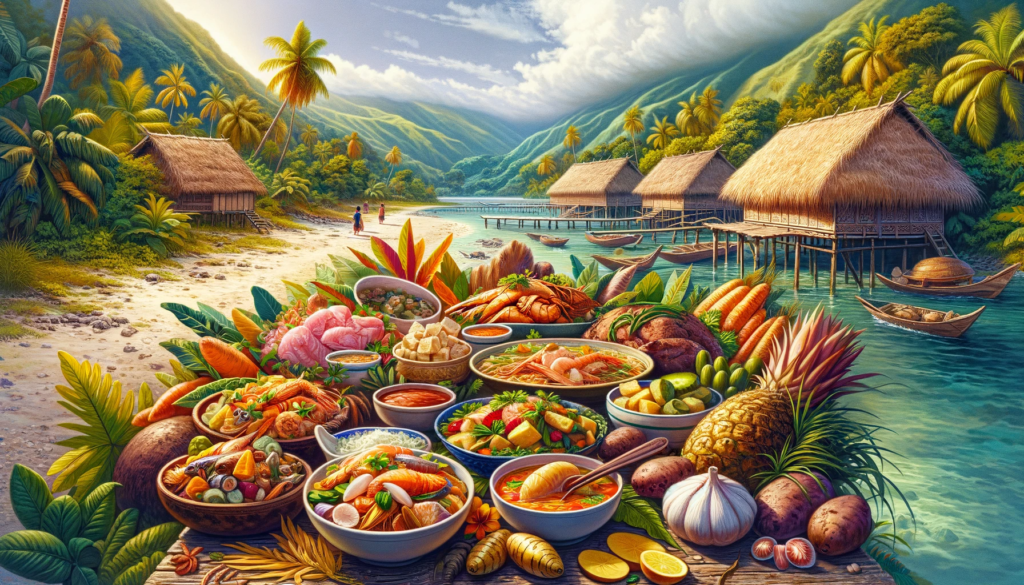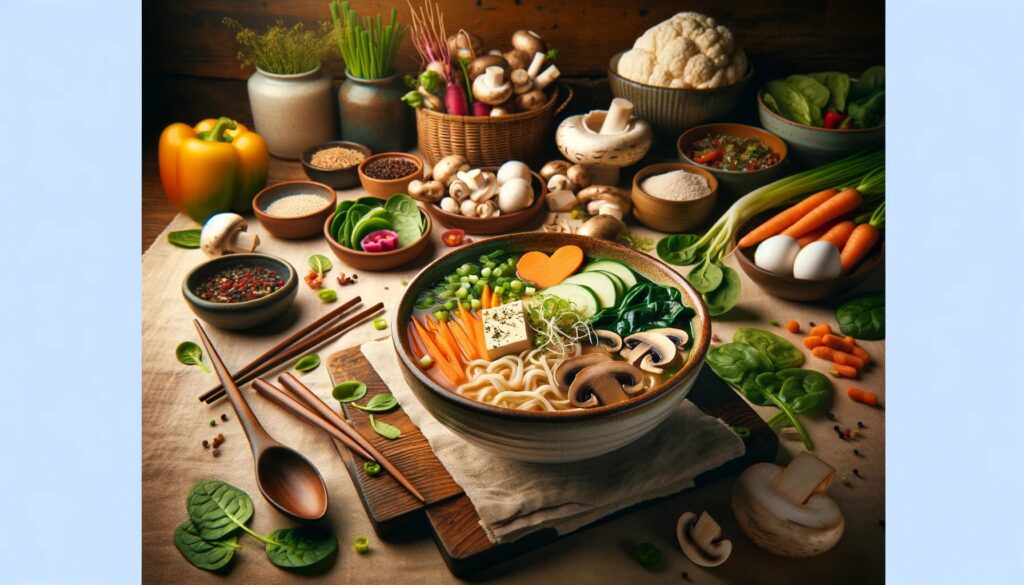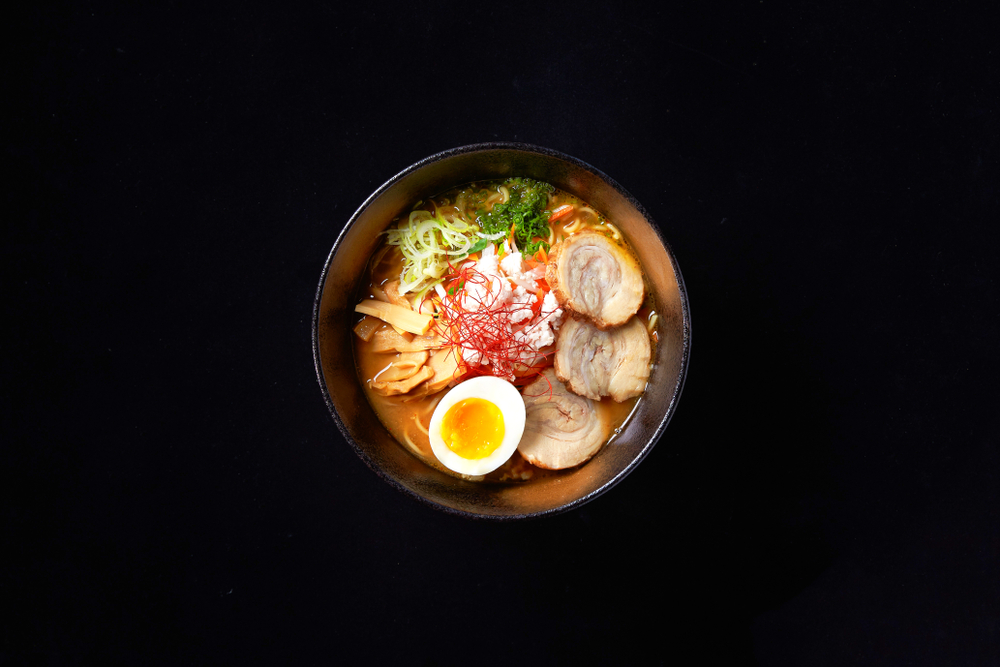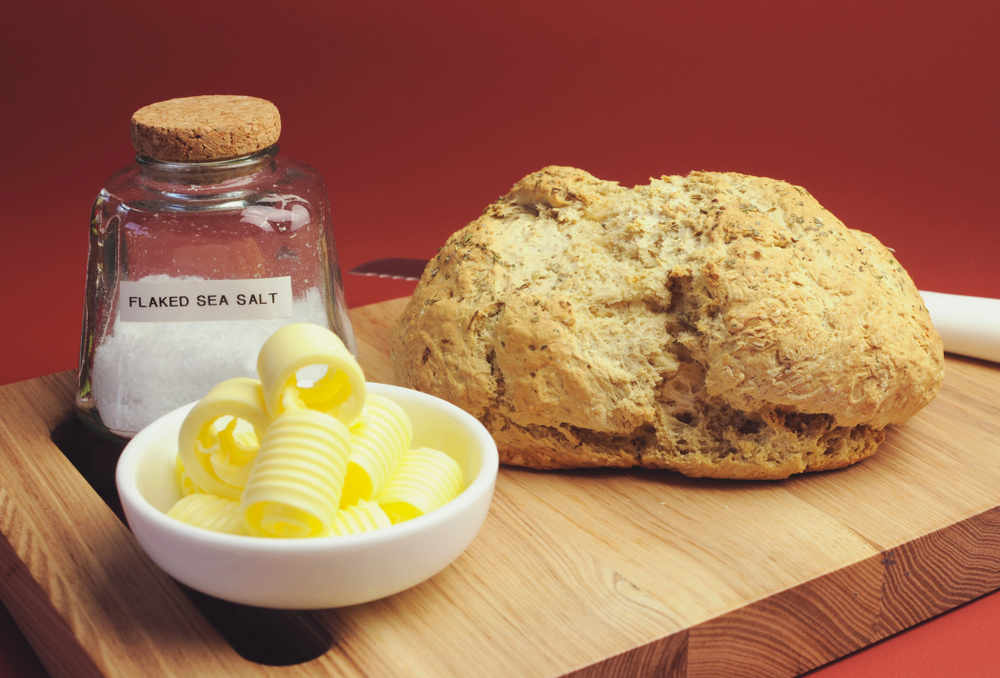Exploring the Rich Flavors of Vietnamese Cuisine
Vietnamese cuisine is a sensational exploration of unique ingredients, balanced flavors, and traditional cooking methods. Immerse yourself in a culinary journey as we delve into some of the must-try dishes that encapsulate the essence of Vietnam.
What Ingredients Define Vietnamese Cooking?
Vietnamese cooking is defined by its emphasis on fresh ingredients, delicate balance between herbal flavors, and contrasting textures. Staples such as rice, noodles, fresh vegetables, seafood, and meats form the backbone of many dishes, but it’s the use of herbs like mint, cilantro, and lemongrass that truly sets Vietnamese cuisine apart. Aromatic spices such as star anise, cinnamon, and black cardamom are used judiciously to add depth while fish sauce provides that quintessential umami punch. It’s the careful blend of these elements that creates the light yet deeply flavorful dishes that are characteristic of Vietnam’s culinary heritage.
How Street Food Embodies Vietnamese Food Culture
Street food in Vietnam is not just about sustenance; it’s a profound expression of culture and community. The bustling street-side stalls and markets offer an immersive experience where the wafting aromas, the sizzle of grilling meats, and the vibrant energy capture the spirit of the nation. Each region has its specialties, reflecting local ingredients and historical influences. From the famed pho of Hanoi to the savory pancake, banh xeo, in the south, the array of flavors and dishes served up on Vietnam’s streets are a testament to the country’s rich culinary landscape and the importance of food in daily social life.
The Role of Fresh Herbs in Vietnamese Dishes
Fresh herbs are so integral to Vietnamese dishes that their roles transcend mere flavoring—they’re often key ingredients in their own right. Plates of fragrant basil, mint, coriander, and perilla are a common sight at almost every meal, allowing diners to customize their dishes with herby brightness. Herbs are tied to health benefits in Vietnamese culture, with each variety bringing not just taste but also its own medicinal properties. They’re instrumental in achieving the balance and harmony Vietnamese cuisine is famed for, providing cool contrasts to warm broths and enhancing the overall sensory experience of each dish.
Essential Guide for First-Time Visitors to Vietnam
Embarking on your first trip to Vietnam can be an exhilarating experience, filled with cultural discoveries and culinary adventures. To assist you in making the most of your journey, we’ve compiled an essential guide, complemented by an insightful travel video that will bring the vibrant streets, breathtaking landscapes, and rich history of Vietnam to life even before you touch down. Whether it’s navigating the bustling markets, indulging in street food, or finding those serene moments in nature, this guide will prepare you for an unforgettable Vietnamese escapade.
Top Street Food Dishes You Can’t Miss in Vietnam
Vietnam’s street food scene is as vibrant as it is varied, offering an array of dishes that are not just delicious but are central to the Vietnamese way of life. Discover these top street food must-haves.
Pho: Vietnam’s Signature Noodle Soup Explained
Pho, Vietnam’s signature noodle soup, is a comforting bowl full of complex flavors and rich history. Traditionally served as a breakfast item, this dish consists of silky rice noodles, tender slices of beef or chicken, and a deeply flavorful broth seasoned with ginger, star anise, and cloves. It’s garnished with fresh herbs, bean sprouts, lime wedges, and chili, allowing eaters to tailor the taste to their liking. Pho is not just a dish but also a symbol of cultural resilience, evolving through historical influences yet remaining distinctly Vietnamese.
Banh Mi: The Fusion Sandwich Worth Craving
Banh Mi is the quintessential Vietnamese sandwich that represents a fusion of Vietnamese and French culinary traditions. A crusty baguette, a vestige of the French colonial past, is generously filled with a variety of ingredients, such as savory meats, pâté, pickled vegetables, fresh cilantro, and spicy chilies. This delightful combination of flavors and textures makes banh mi an irresistible street food favorite that has gained international acclaim. The sandwich is a demonstration of how Vietnamese cuisine has embraced outside influences while infusing them with local tastes and ingredients.
Bun Cha: The Perfect Combination of Grilled Pork and Noodles
Bun Cha is a Hanoian delicacy that entices the palate with the perfect blend of smoky, sweet, and savory flavors. This dish typically consists of grilled pork patties and slices served over a bed of rice vermicelli noodles, an abundance of fresh herbs, and a side of dipping sauce. The sauce, made from fish sauce, vinegar, sugar, and water, with pickled carrot and papaya, brings the separate components together into a harmonious dish. Bun Cha is not only a beloved lunchtime meal but also a social experience, often enjoyed at crowded roadside eateries with friends and family.
Egg Coffee: Why It’s a Vietnam Street Food Staple
Contrary to what its name might suggest, egg coffee is a unique Vietnamese creation that combines coffee with a creamy egg-based foam. Originating from Hanoi, this rich and frothy concoction has made its mark both domestically and internationally. The drink is prepared by whipping egg yolks with sugar and coffee, then pouring it over hot espresso, creating a luxurious layer of sweet custard-like foam atop the strong, bitter coffee below. This ingenious beverage showcases the innovation within Vietnamese food culture and has become a staple in the street food scene, providing a warm and comforting treat, especially on cooler days.
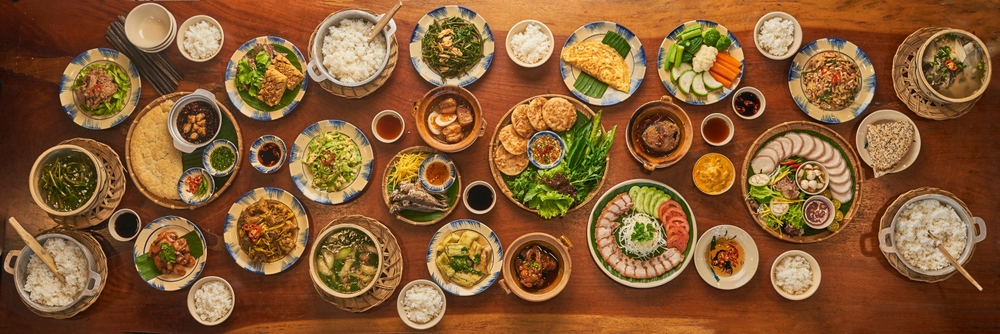
Traditional Vietnamese Dishes for a Family Feast
Vietnamese family gatherings are an aromatic tapestry of dishes grounded in tradition and shared heritage. Experience the communal spirit with these classic family dishes.
Cha Ca: A Unique Take on Grilled Fish
Cha Ca is a distinctive Vietnamese dish that offers a unique spin on grilled fish. This beloved meal originates from Hanoi and features white fish marinated in turmeric and galangal, then grilled to perfection. At the table, it’s typically cooked with a bewitching blend of sautéed dill and spring onions. Served with rice noodles, peanuts, and a pungent shrimp paste sauce, Cha Ca is a riot of textures and flavors. The dish is a celebratory food often enjoyed during special occasions and a testament to Vietnam’s regional culinary specialties.
Goi Cuon: Freshness Wrapped in Rice Paper
Goi Cuon, also known as fresh spring rolls, is a dish that captures the essence of Vietnamese freshness. These rolls are tightly packed with vermicelli noodles, crisp vegetables, fresh herbs, and usually shrimp or pork, all wrapped in a translucent rice paper. Dipped in hoisin sauce or a zesty fish sauce-based dip, these delicate rolls are a balance of crunchy and soft textures and are often served as a light and healthy appetizer. Goi Cuon is a favorite in family feasts, serving as a refreshing contrast to the more savory, rich dishes on the table.
Cao Lau: The Noodle Dish With Centuries of History
Cao Lau is a noodle dish steeped in centuries of history, hailing from the ancient town of Hoi An. It’s characterized by its thick, chewy rice noodles, which are made using water from a specific local well and lightly charred for a distinct texture and taste. The noodles are layered with slices of barbecued pork, crunchy croutons, bean sprouts, greens, and a light broth flavored with star anise and other spices. The distinct regional dish is a flavorful nod to the melting pot that is Vietnamese cuisine, influenced by Chinese and Japanese culinary techniques while maintaining its uniquely Vietnamese essence.
Thit Kho To: Vietnam’s Caramelized Braised Pork and Eggs
Thit Kho To is a heartwarming dish that epitomizes the homeliness of Vietnamese cooking. This caramelized braised pork and egg delicacy is cooked slowly, allowing the pork to tenderize and the flavors of the caramel, fish sauce, and coconut water to meld beautifully. The eggs, hard-boiled and then simmered in the same sauce, absorb the sweet and savory flavors, becoming a highlight of the dish. Thit Kho To is often enjoyed during the Lunar New Year but is also a staple for family gatherings, symbolizing prosperity and togetherness.
Canh Chua: Tamarind Soup with a Sweet and Sour Twist
Canh Chua is a vibrant tamarind soup that delights the taste buds with its quintessential sweet and sour profile. This iconic Vietnamese soup combines a tamarind-based broth with tomatoes, pineapples, bean sprouts, and an array of herbs. It’s often punctuated with fish from the Mekong Delta or shrimp, adding a layer of savory flavor. Canh Chua is more than a dish; it’s an experience that speaks to Vietnam’s tropical abundance and its people’s ingenuity in creating deeply flavored, nutritionally balanced dishes suitable for the hot climate.
Vietnamese Desserts: A Sweet Confluence of Traditions
The conclusion of a Vietnamese meal often brings with it a series of delightful and surprising sweets. Explore the desserts that carry the essence of Vietnam’s diverse culinary influences.
Che: A Versatile Sweet Dessert Soup
Che refers to any traditional Vietnamese sweet dessert soup or pudding, and its variations are as copious as they are delicious. Ingredients can range from mung beans, black-eyed peas, and tapioca to fruit, jelly, and coconut cream. Che can be served hot or cold, in a glass or bowl, and is often layered to create a visually appealing and texturally complex dessert. The variety of Che represents the broad array of regional produce and cultural diversity across Vietnam, making each version unique to its locale.
Banh Flan: The Vietnamese Take on Crème Caramel
Banh Flan, often known as Vietnamese crème caramel, is a creamy, indulgent dessert that showcases the French influence on Vietnam’s culinary culture. Made with a simple mixture of eggs, milk, sugar, and vanilla extract, Banh Flan’s smooth, velvety texture and the sweet caramel top layer make it a popular dessert choice. This dessert is loved for its simplicity and elegance, symbolizing the fusion of Vietnamese ingenuity with French sophistication.
Banh Xeo: Satisfy Your Sweet Tooth with Vietnamese Pancakes
Banh Xeo is a sizzling, crepe-like pancake that, despite the name “Xeo” which can translate to “sizzle,” is not typically a dessert but rather a savory delight that can satisfy the cravings of those with a sweet tooth due to its lightly crisp texture and flavorful filling. Its batter is made from rice flour, coconut milk, and turmeric, giving it a vibrant yellow hue. Stuffed with shrimp, pork, bean sprouts, and mung beans, the pancake is served with lettuce and herbs, which add freshness and balance the hearty fillings. While not a conventional sweet treat, the crisp edges and delectable fillings of Banh Xeo make it an addictive dish that can be enjoyed any time of day.
Banh Chuoi Nuong: Vietnam’s Beloved Banana Cake
Banh Chuoi Nuong is Vietnam’s cherished take on banana cake. This traditional dessert consists of ripe bananas, which are plentiful in Vietnam, mixed with sticky rice, coconut milk, and sometimes tapioca pearls, creating a delightful concoction that is steamed or baked. The result is a sweet and moist cake with a rich banana flavor, often enhanced with a sprinkling of sesame seeds on top for added texture. Banh Chuoi Nuong is not only a treat to satisfy sweet cravings but also a representation of the resourcefulness and simplicity in Vietnamese dessert-making.
FAQs About Vietnamese Cuisine
As we’ve explored the must-try dishes of Vietnam, questions often arise about the intricacies of this vibrant cuisine. Here are some of the most frequently asked questions to further enhance your knowledge.
What Makes Vietnamese Food Different from Other Asian Cuisines?
Vietnamese food stands out among other Asian cuisines due to its emphasis on freshness, use of herbs, and balanced approach to flavor. The cuisine often exhibits a harmonious combination of five fundamental tastes (sweet, sour, bitter, salty, and umami) in each dish. This balance, shaped by philosophical principles, is achieved by using fresh ingredients, minimal use of oil, and a prolific use of herbs and vegetables. The cooking methods often involve quick frying, steaming, or grilling, which help maintain the integrity and nutritional content of the food. Furthermore, Vietnamese cuisine often incorporates a philosophical element involving the balance of the five elements, creating not just a meal but an experience that caters to the senses and well-being.
Are There Vegetarian Options in Vietnamese Cuisine?
Vietnam offers a wealth of vegetarian options, thanks to the versatility of its cuisine and the prevalence of Buddhism, which encourages meatless diets. Many traditional dishes can easily be adapted to suit vegetarians by substituting tofu or mushrooms for meat. Popular vegetarian dishes include “Pho Chay” (vegetarian pho), “Banh Mi Chay” (vegetarian banh mi sandwich), and “Bun Chay” (rice vermicelli with assorted vegetables and tofu). Additionally, the country’s tropical climate provides an abundance of fresh fruits and vegetables year-round, making it easy to maintain a vegetarian diet while enjoying the rich flavors for which Vietnamese cuisine is known.
How Can I Recreate Authentic Vietnamese Flavors at Home?
Recreating authentic Vietnamese flavors at home can be achieved with a well-stocked pantry of essential ingredients. Key items include fish sauce, rice vinegar, rice noodles, fresh herbs like mint and cilantro, and a variety of spices such as star anise, cinnamon, and cardamom. It’s also helpful to have a mortar and pestle to grind fresh spices and release their flavors more fully. Additionally, investing time in making homemade broths and condiments, such as nuoc cham, can elevate your home-cooked Vietnamese dishes to a more authentic level. Remember, it’s the careful balance of ingredients and the freshness of components that make Vietnamese cuisine stand out.
What Are Some Tips for First-Timers Trying Vietnamese Food?
For first-timers trying Vietnamese food, it’s recommended to start with some of the most iconic dishes, such as pho, banh mi, and spring rolls, to get a baseline of the flavors and ingredients common in Vietnamese cuisine. Don’t hesitate to ask for recommendations at restaurants and be open to the variety of textures and flavors. Utilize the accompanying herbs and sauces to customize the dish to your taste. Remember to enjoy the food with an open mind and take the opportunity to explore the diverse range of dishes on offer, from street food to family-style feasts. Vietnamese food is often about balance and subtlety, so take the time to savor the unique combination of flavors in each bite.



